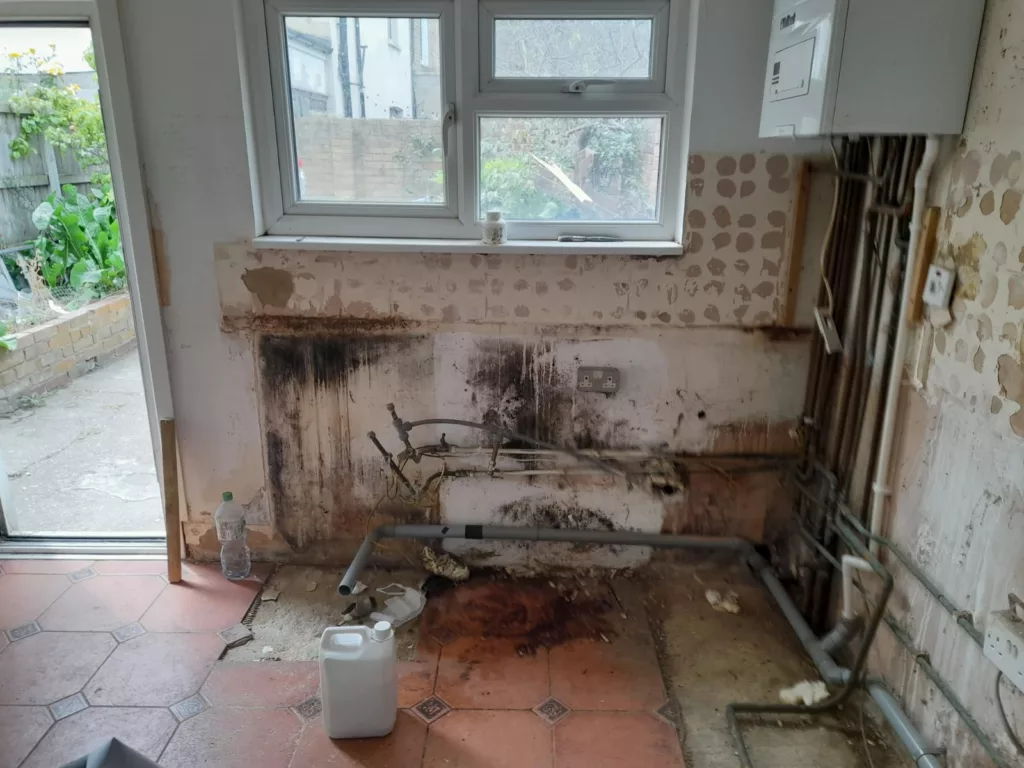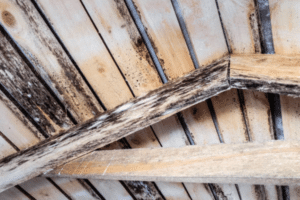While mould is a relatively common occurrence in the home, under the right conditions it can spread and potentially harm your health. Today, we’ll be taking a closer look at what mould actually is, the differences between mould and black mould, as well as demystifying some common myths surrounding mould.
What exactly is mould?
Mould receives a bad reputation throughout homes worldwide, and it’s understandable to see why. Producing a musty smell in the home and making areas quite unappealing, mould is actually comprised of many different types, which in nature play an important part in breaking down waste materials and returning nutrients to the earth. It thrives in humid and wet environments, releasing spores which help to spread the mould to other areas.
Whether floating in through open windows, trekked in through the front door on your shoes, or brought inside on the fur of a pet, mould spores can quite easily travel from outside to inside. If the conditions are right, these spores will establish themselves within your home. While it’s impossible to prevent all mould spores from entering the home, a frequent cleaning routine can help to prevent mould from establishing itself within your property.
Is mould an issue in the UK?
It’s estimated that as many as 1 in 5 UK households are currently dealing with an issue with mould. Once established, it can be quite tricky to remove mould from the home yourself, as even once it appears that all of the mould has disappeared, spores can still linger in the air and on soft furnishings.
Excess moisture in the home, such as that resulting from a leak or issues with insulation, will quickly transform your home into the perfect breeding ground for mould. What’s more, consistent warm temperatures, such as those found in a heated home in the wintertime, will promote mould growth even further.
Mould vs black mould
While we use mould as an umbrella term for the type of fungus, one of the most common types of mould found inside the home is actually known as black mould. As the name suggests, black mould is dark in colour and thrives in damp environments, which often starkly contrasts the white tiles and walls typically found in the bathroom and other areas of high humidity.
The main difference between ‘ordinary’ mould and black mould is the severity of the health implications it can cause. Black mould has been recognised by leading researchers as potentially causing severe health problems in individuals.
Once you have detected black mould in your home, it’s essential that action is taken as soon as possible. Failure to do so can lead to mould penetrating deeper into the surfaces of your home, proving a much more costly issue to resolve.
The risks of black mould.
Black mould is considered one of the worst types of mould for human health, due to the mycotoxins that it produces. In small amounts, the risk to human health is often minimal, however as the mould spreads and grows, mycotoxins are produced in greater concentrations and can prove to be a substantial health risk. Mycotoxicosis, also known as mould poisoning, is a condition that can arise when humans are exposed to high concentrations of mould. Health risks associated with black mould in the home include, but are not limited to, the following:
- Headaches
- A runny nose
- Sore throat
- Coughing
- Fatigue
- Respiratory issues
Those with pre-existing respiratory issues or who have a compromised immune system may be particularly affected by the presence of mould in the home. For example, those with asthma may be at a greater risk of an asthma attack in areas with a high concentration of mould.
Whilst there is debate about whether mould causes damage to the structural integrity of the property, the rapid growth of mould does suggest an underlying issue with humidity and ventilation, which can be a good indication of a larger problem.
How is black mould removed?
In smaller patches, mould can be removed from surfaces using a mild detergent solution. However, even then this does not remove the mould spores which are disturbed when you clean it. After a while, you may well find that the mould has re-established itself once more, leading to a cycle of cleaning and re-growth.
The most effective way to remove mould completely from your home is to identify the underlying issues that are leading to rapid mould growth – humidity or lack of ventilation, for example. A professional mould cleaning service will do just this, as well as utilise advanced solutions to remove mould spores not only from surfaces but from the entire area, including the air and soft furnishings. This helps to mitigate the chances of mould returning and provides you with options to consider in order to further safeguard against mould.
Summary – Local mould removal London
Mould is unfortunately a daily reality for many UK homeowners. From small patches to large concentrations, mould should ideally be removed as quickly as possible to minimise any health implications as well as potential damage to the structure of your home.
Here at Airfresh, we specialise in the removal of all types of mould, including black mould. Operating with cutting-edge equipment and solutions, our black mould removal specialists work hard to eradicate all traces of mould from your home. We tailor our services to your individual needs, addressing the issue at the source to return your home to a safe and mould-free state.
Call us today on 0203 130 4068 to learn more about how our mould removal specialists can help you. We are happy to answer any questions or queries that you may have about the service.




